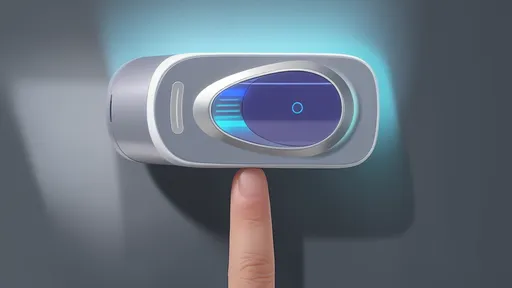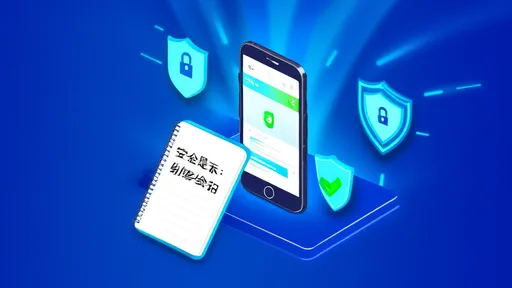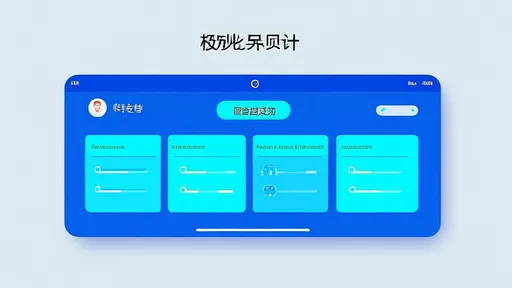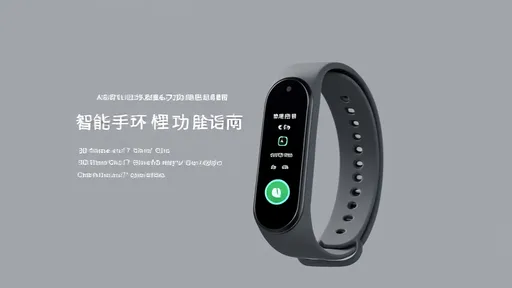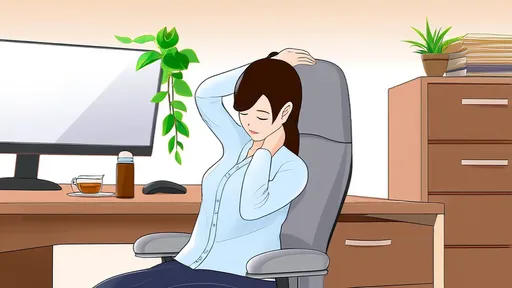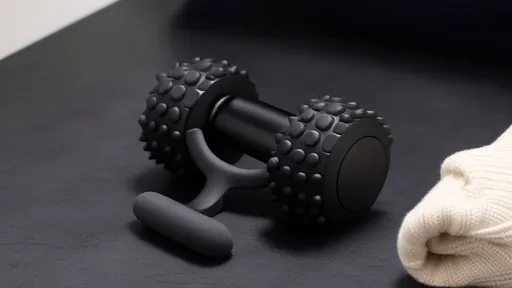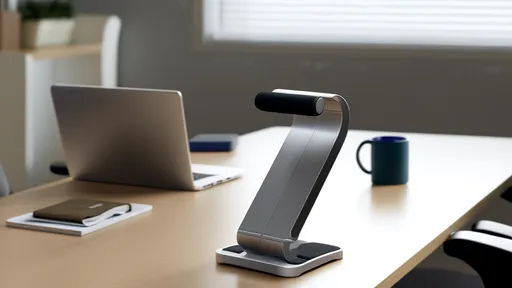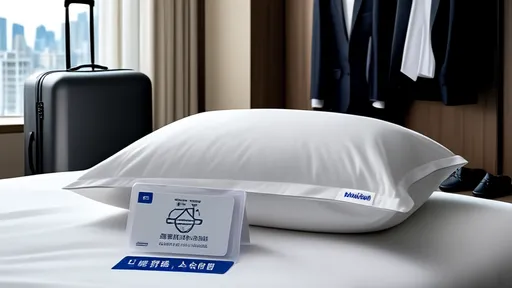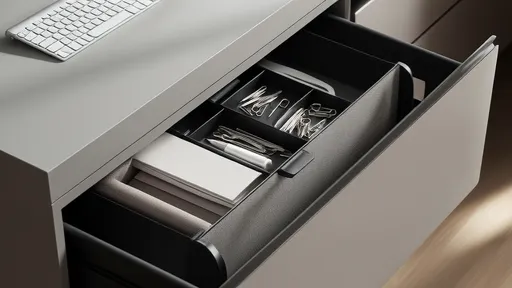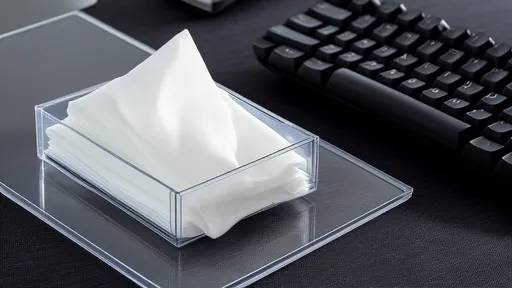In today’s fast-paced world, many of us find ourselves glued to our desks for hours on end, often losing track of time until stiffness or discomfort sets in. Sedentary behavior has become a silent health hazard, linked to a range of issues from poor posture to increased risk of chronic diseases. Fortunately, wearable technology like fitness bands has stepped in to combat this modern-day problem. One of the most valuable features these devices offer is the sedentary reminder—a gentle nudge to get up and move. But simply enabling the feature isn’t enough; understanding how to optimize its settings can make the difference between a helpful tool and an ignored alert.
The science behind sedentary reminders is rooted in our body’s need for regular movement. Prolonged sitting slows circulation, reduces metabolic activity, and strains muscles that remain static for too long. Research shows that even brief interruptions to sitting—just two minutes of light walking every hour—can significantly improve glucose metabolism and reduce musculoskeletal discomfort. Wearables leverage this data by prompting users to break up long periods of inactivity. However, the effectiveness of these reminders depends largely on how they’re configured to align with individual lifestyles and work patterns.
Customizing reminder intervals is where many users miss opportunities. While default settings often suggest hourly alerts, this one-size-fits-all approach may not suit everyone. For instance, creative professionals in deep work sessions might benefit from longer 90-minute intervals, whereas those recovering from injuries may need 30-minute prompts to prevent stiffness. The key is to experiment with different durations while observing how your body responds. Some advanced wearables even learn from your activity patterns over time, automatically adjusting reminder frequency based on when you’re typically most sedentary.
Another often-overlooked aspect is the type of movement encouraged by these reminders. Simply standing up momentarily satisfies some devices’ activity requirements, but this barely scratches the surface of what’s beneficial. Experts suggest coupling reminders with specific micro-activities: a series of shoulder rolls, a short walk to hydrate, or even desk-based stretches. Many modern wearables allow customization of reminder actions—instead of just displaying “Time to move!” they can guide you through a 45-second postural reset or prompt you to take ten steps. This transforms passive alerts into active behavior change tools.
The timing of reminders plays a crucial role in their effectiveness. During high-focus tasks, people often dismiss alerts without breaking concentration, rendering them useless. Smart configuration involves syncing reminders with natural breaks in workflow. Some users find success with “double reminders”—a soft alert five minutes before a scheduled break followed by a more insistent prompt at break time. Others program their devices to withhold reminders during known deep work periods (like morning writing sessions) while increasing frequency during habitual slump times (post-lunch hours). This strategic scheduling prevents alert fatigue while maintaining movement consistency.
Beyond basic functionality, integrating reminders with other health metrics creates a more holistic approach. Some premium wearables cross-reference sedentary alerts with heart rate variability, stress levels, or sleep data to determine optimal movement times. For example, if your device notices elevated stress markers coupled with prolonged sitting, it might trigger an earlier reminder with guided breathing exercises instead of just suggesting a walk. This intelligent integration acknowledges that our bodies’ needs fluctuate daily, requiring more nuanced interventions than rigid timing alone can provide.
The psychological aspect of these alerts shouldn’t be underestimated either. How reminders are framed significantly impacts compliance. Devices that use positive messaging (“You’ve been sitting 50 minutes—let’s recharge with a quick stretch!”) tend to outperform those with generic warnings. Some users report better adherence when their wearables tie reminders to personal goals (“3 more movement breaks today to hit your weekly target”). This subtle shift from obligation to opportunity makes movement feel like an achievement rather than an interruption.
For those managing chronic conditions or specific health goals, medical-grade customization takes sedentary alerts to another level. Physical therapists often collaborate with patients to program reminders that align with rehabilitation protocols—perhaps emphasizing posture correction every 25 minutes for someone recovering from a spinal injury. Diabetics might set stricter movement intervals to manage blood sugar, while pregnant users could configure reminders for pelvic tilts to alleviate lower back pressure. When wearable technology intersects with personalized medicine, sedentary reminders transform from wellness features into legitimate therapeutic tools.
As with any health technology, long-term engagement remains the ultimate challenge. The initial novelty of movement alerts often wears off after a few weeks. Combatting this requires periodically refreshing reminder settings—changing alert tones, adjusting vibration patterns, or setting monthly movement challenges. Some users create accountability by syncing reminders with colleagues’ devices, turning movement breaks into social interactions. The most successful implementations treat sedentary reminders not as nagging notifications, but as integral components of a broader strategy to make sustained movement as habitual as checking smartphones.
Looking ahead, the evolution of sedentary reminder technology points toward even greater personalization. Emerging algorithms promise to account for factors like circadian rhythms, meeting schedules (by syncing with calendars), and even local weather (suggesting outdoor walks when possible). As wearables incorporate more environmental and biometric data, the humble “time to move” alert will likely become as nuanced and individualized as the people using it. For now, taking the time to thoughtfully configure this feature can yield immediate benefits—transforming those subtle wrist vibrations from mere interruptions into meaningful moments of self-care throughout the day.
Pulse oximeters have become indispensable tools in modern healthcare, particularly in monitoring oxygen saturation levels non-invasively. However, one common challenge users face is nail interference, which can skew readings and lead to inaccurate results. Understanding how to mitigate this issue is crucial for both medical professionals and individuals relying on these devices for health monitoring.
The pharmaceutical industry has undergone significant transformations in recent years, with one of the most notable advancements being the implementation of drug traceability systems. These systems, often centered around unique identification codes known as drug traceability codes, have become a cornerstone in ensuring the safety, authenticity, and transparency of pharmaceutical products. The ability to track a drug's journey from manufacturing to consumption has not only bolstered consumer confidence but also streamlined regulatory compliance and supply chain management.
The rise of digital healthcare credentials has brought unprecedented convenience to patients worldwide, but it has also opened new avenues for fraudsters. Electronic medical insurance certificates, designed to streamline access to healthcare services, have become a prime target for sophisticated cybercriminals. This phenomenon isn't isolated to any particular region—from Beijing to Boston, healthcare systems are witnessing an alarming increase in digital credential theft.
The rise of telemedicine has transformed how patients access healthcare, with online consultations becoming increasingly common. One critical aspect of virtual visits that often goes overlooked is the quality of medical photos patients submit. Clear, well-composed images can make the difference between an accurate remote diagnosis and unnecessary follow-up appointments. As patients take more responsibility for documenting their health concerns through photography, mastering a few fundamental techniques becomes essential.
The growing reliance on health apps has brought privacy and security concerns to the forefront. As these applications collect sensitive data—ranging from heart rate and sleep patterns to medical history and GPS locations—users and regulators alike are questioning how this information is managed. The permissions granted to health apps often determine the extent of data access, making it crucial to establish robust strategies for permission management.
In today’s fast-paced world, many of us find ourselves glued to our desks for hours on end, often losing track of time until stiffness or discomfort sets in. Sedentary behavior has become a silent health hazard, linked to a range of issues from poor posture to increased risk of chronic diseases. Fortunately, wearable technology like fitness bands has stepped in to combat this modern-day problem. One of the most valuable features these devices offer is the sedentary reminder—a gentle nudge to get up and move. But simply enabling the feature isn’t enough; understanding how to optimize its settings can make the difference between a helpful tool and an ignored alert.
The modern pace of life has made fast food an unavoidable part of our dietary landscape. While nutritionists consistently warn about the health consequences of regular fast food consumption, the reality is that most people will find themselves eating these convenient meals more often than they'd like to admit. Rather than moralizing about avoidance, a more practical approach focuses on mitigation - how to nutritionally rescue your body after fast food consumption.
In our screen-dominated world, eye fatigue has become an epidemic. The constant glare from digital devices leaves millions rubbing their temples and squinting through blurred vision. While artificial tears and blue light glasses offer temporary relief, traditional Chinese medicine presents an intriguing alternative – acupressure for eye strain. This ancient healing art teaches that strategic finger pressure along meridian pathways can dissolve tension, improve circulation, and restore visual clarity without medications.
Air-conditioned rooms provide comfort during hot weather, but they often come with an unintended side effect: dry nasal passages. The constant circulation of cooled air tends to strip moisture from the environment, leaving many people struggling with irritation, congestion, or even nosebleeds. Understanding how to maintain nasal hydration in such conditions is essential for both comfort and health.
For those who spend long hours sitting at a desk or in front of a computer, the struggle with stiff calves and poor circulation is all too real. The modern sedentary lifestyle has given rise to a generation of "desk-bound professionals" who often neglect the importance of movement. Enter the calf massage roller—a simple yet effective tool designed to alleviate tension, improve blood flow, and restore mobility to overworked lower legs.
In today's fast-paced corporate environment, telephone conferences have become an indispensable part of daily work routines. However, the prolonged hours spent hunched over phones or laptops during these virtual meetings have given rise to a silent epidemic: chronic neck and shoulder pain. As awareness grows about the physical toll of our digital work habits, a new category of ergonomic solutions has emerged – the telephone conference neck support brace.
Business travel often comes with its own set of challenges, and one of the most overlooked yet critical aspects is the quality of sleep. Hotels, aware of this, have started paying closer attention to their pillow offerings. The way hotels handle pillows can significantly impact a guest's experience, and many are now adopting innovative approaches to ensure comfort and hygiene.
Afternoon tea is a beloved ritual for many, offering a moment of respite in the midst of a busy day. However, traditional afternoon tea spreads often lean heavily on sugary treats, refined carbohydrates, and calorie-laden snacks. For those seeking a healthier approach without sacrificing flavor or satisfaction, there are plenty of nutritious alternatives that can transform this daily indulgence into a nourishing experience.
The modern workplace can be a breeding ground for stress, and often, the state of our physical surroundings mirrors our mental clutter. Nowhere is this more evident than in the humble desk drawer—a microcosm of chaos for many professionals. The concept of drawer decompression organizing isn’t just about tidying up; it’s a tactile form of self-care that bridges the gap between productivity and mental well-being.
In today’s fast-paced digital world, keyboards have become an essential part of our daily lives. Whether at work, school, or home, we rely on them for communication, productivity, and entertainment. However, what many people overlook is the fact that keyboards can harbor a surprising amount of germs and bacteria. Studies have shown that keyboards can be dirtier than toilet seats, making regular cleaning a necessity. One effective and convenient solution for maintaining keyboard hygiene is the use of disinfecting wipes. These wipes are specially designed to clean and sanitize surfaces without causing damage, making them ideal for electronic devices.
